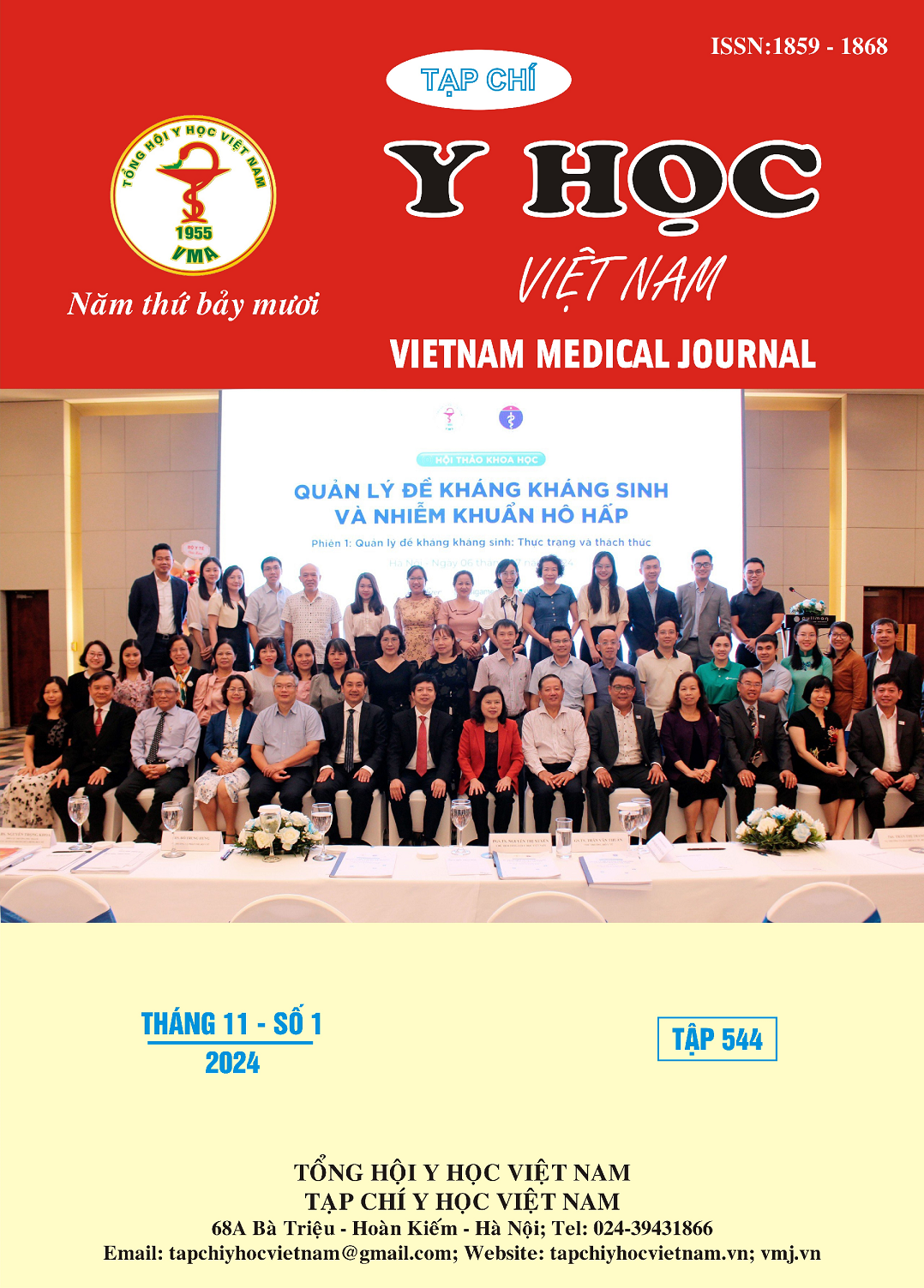MOLECULAR SUBTYPES AFFECTING SURVIVAL IN INVASIVE BREAST CARCINOMA
Main Article Content
Abstract
Objective: determine the free-disease (DFS) and overall (OS) observed five-year survival rate of female breast cancer patients, as well as investigate the affecting of molecular subtypes to survival. Patients and method: Retrospective data from Bach Mai and Ha Noi cancer hospitals comprised 300 women who were diagnosed with breast cancer between January 1st, 2017, and June 31st, 2019, and were followed up to June 31st, 2024 (cut off point for follow-up). To evaluate survival, Kaplan-Meier analysis was conducted. Using the log rank test and Cox regression analysis, the factors influencing the survival rate and recurrence were examined. Results: The OS and DFS rates were 91.3% and 93%, respectively. The distribution by molecular subtypes as follows LumA, LumB/Her2-, LumB/Her2+, Her2, bộ ba âm tính, the OS rates were 97.1%, 93.3%, 90%, 83.3% và 85%, respectively; the DFS rates were 95.1%, 86.7%, 94%, 93.8% và 95%, respectively. There were statistically significant associations between molecular subtypes and OS (p = 0.029) but they were independent of DFS (p = 0.308). Conclusion: Molecular subtypes were useful in predicting the prognosis of breast cancer patients.
Article Details
Keywords
Breast cancer, molecular subtypes, survival.
References
2. Zhang HM, Zhang BN, Xuan LX, Zhao P. [Clinical characteristics and survival in the operable breast cancer patients with different molecular subtypes]. Zhonghua Zhong Liu Za Zhi. 2009;31(6):447-451.
3. Dokcu S, Caparlar MA, Başçeken Sİ, Eroglu A. Distribution and Clinicopathological Characteristics of Breast Cancer Molecular Subtypes in Turkish Women. European Journal of Clinical Medicine. 2022;3(6):14-20. doi:10.24018/ clinicmed.2022.3.6.220
4. Zeng H, Zheng R, Guo Y, et al. Cancer survival in China, 2003–2005: A population-based study. International Journal of Cancer. 2015;136(8): 1921-1930. doi:10.1002/ijc.29227
5. Xue C, Wang X, Peng R, et al. Distribution, clinicopathologic features and survival of breast cancer subtypes in Southern China. Cancer Sci. 2012;103(9): 1679-1687. doi:10.1111/j.1349-7006.2012.02339.x
6. Osborne CK, Bardou V, Hopp TA, et al. Role of the estrogen receptor coactivator AIB1 (SRC-3) and HER-2/neu in tamoxifen resistance in breast cancer. J Natl Cancer Inst. 2003;95(5):353-361. doi:10.1093/jnci/95.5.353
7. Anzick SL, Kononen J, Walker RL, et al. AIB1, a steroid receptor coactivator amplified in breast and ovarian cancer. Science. 1997;277 (5328): 965-968. doi:10.1126/science. 277.5328.965
8. Ossovskaya V, Wang Y, Budoff A, et al. Exploring Molecular Pathways of Triple-Negative Breast Cancer. Genes Cancer. 2011;2(9):870-879. doi:10.1177/1947601911432496


